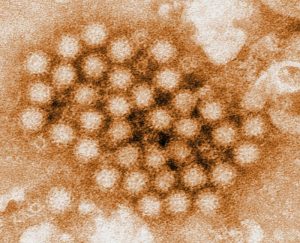A Centers for Disease Control and Prevention (CDC) Vessel Sanitation Program (VSP) environmental health officer will board the Princess Cruise Lines vessel, Crown Princess today in California to evaluate a norovirus outbreak that struck the cruise ship during a month-long Pacific cruise.

Image/Video Screen Shot
According to the VSP, 158 of 3,009 (5.25%) have been sickened with the gastrointestinal bug, norovirus, while 14 of 1,160 (1.21%) of the crew were affected.
In response to the outbreak, Princess Cruises and the crew aboard the ship are taking the following actions: Increasing cleaning and disinfection procedures according to their outbreak prevention and response plan, making announcements to notify onboard passengers of the outbreak, encourage case reporting, and encourage hand hygiene and collected stool specimens from ill passengers and crew.
An intensified cleaning and sanitization will take place when the ship arrives in San Pedro on November 16, 2014. Disembarkation will be in stages to help keep the virus from spreading. The terminal will also undergo an increased cleaning and sanitation.
The last cruise ship outbreak investigated by the VSP was also the Crown Princess in mid-April where approximately 150 passengers and crew were sickened with Norovirus and Enterotoxigenic E. coli (ETEC).
Norovirus is a highly contagious viral illness that often goes by other names, such as viral gastroenteritis, stomach flu, and food poisoning.
The symptoms include nausea, vomiting, diarrhea, and some stomach cramping. Sometimes people additionally have a low-grade fever, chills, headache, muscle aches, and a general sense of tiredness. The illness often begins suddenly, and the infected person may feel very sick. In most people, the illness is self-limiting with symptoms lasting for about 1 or 2 days. In general, children experience more vomiting than adults do.

Norovirus is spread person to person particularly in crowded, closed places. Norovirus is typically spread through contaminated food and water, touching surfaces or objects contaminated with norovirus and then putting your hand or fingers in your mouth and close contact with someone who is vomiting or has diarrhea.
Norovirus causes more than 20 million illnesses annually, and it is the leading cause of gastroenteritis outbreaks in the United States.
For more infectious disease news and information, visit and “like” the Infectious Disease News Facebook page


is this ship safe for us future passengers please reply
Hi Sharon,
The cruise ship has already been cleaned and sanitized and off on its next voyage.